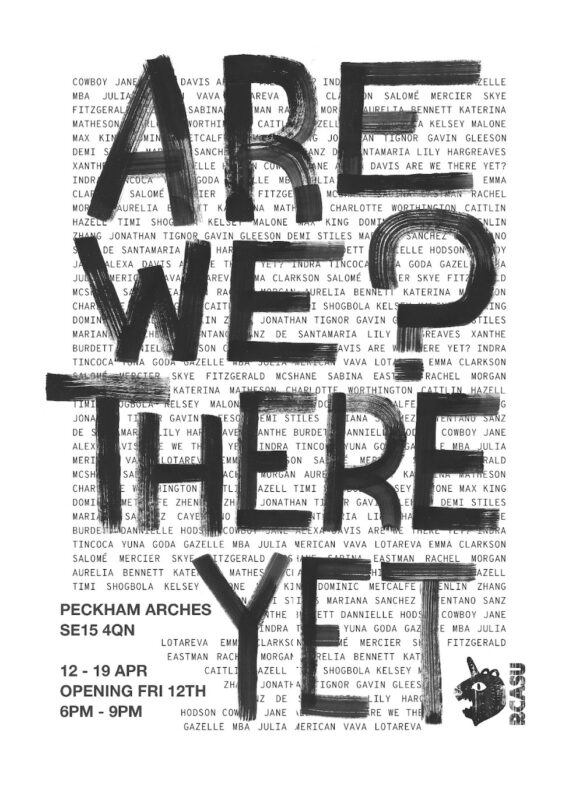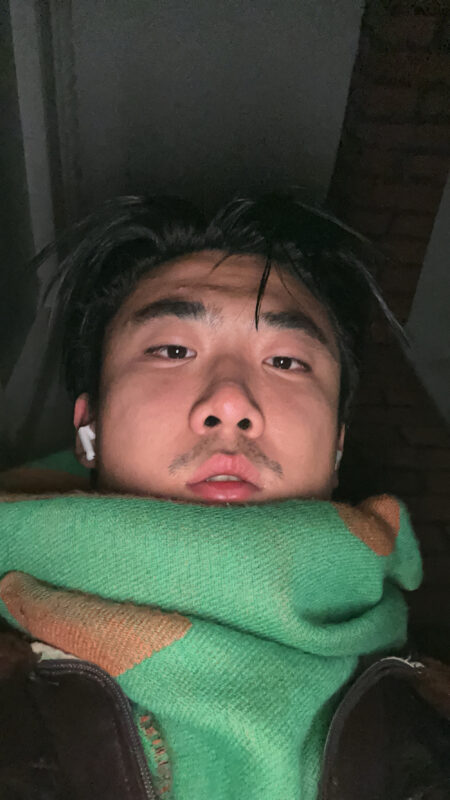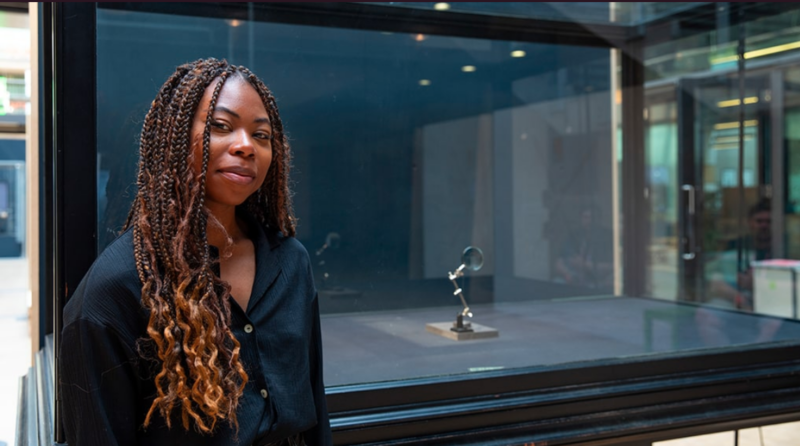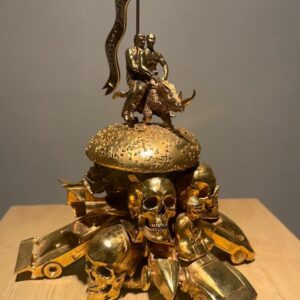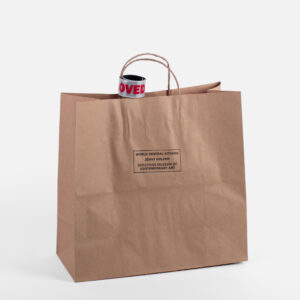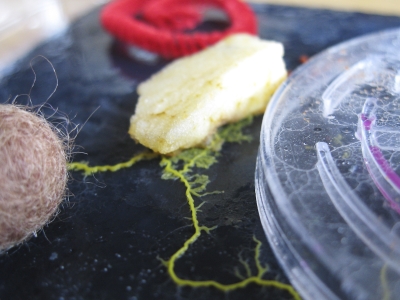
Collective Slime Mould Experiment with the MA Art and Science at Central Saint Martins 2011 © Heather Barnett / slimoco 2011
Tuesday 8 April 2014, 7-9pm places are free RSVP to info@gvart.co.uk
49 Chiltern Street London W1U 6LY
GV Art presents Between & Across Disciplines: Art & Science in Higher Education, a panel discussion on interdisciplinarity and cross-disciplinary collaboration between the arts and sciences in Higher Education. The panel will focus on some of the new courses and innovative pedagogical models that have emerged with a view to building connections between and across different disciplines in the arts and sciences. It is designed to promote debate on the structure and aims of these courses, their impact on pedagogical and research practice, and on the future of the university and Art & Science in general in the era of Moocs, TED talks and Wikiversity.
This event is organised in the context of the current exhibition at GV Art, Encyclopedia Galactica (13 February – 17 April, 2014). The exhibition inaugurates a research project on the Gaberbocchus Press Common Room, where a series of weekly discussions on art and science was organised by Stefan and Franciszka Themerson between August 1957 and July 1959:
“The aim of this Common Room is to provide artists and scientists and people interested in the philosophy of science and the philosophy of art with a congenial place where they can meet and exchange thoughts. We don’t identify science with gadgetry, nor art with a kind of romantic irresponsibility. We would rather prefer to see both sides as investigators and explorers of the universe, whether the part of the universe that is being explored is the nebula in Andromeda, or a molecule, or the constellation of individual experiences of an artist or a poet. (Gaberbocchus Common Room, 1957)”
Although the dichotomy between these two “sides” persists, the last few years have seen a number of new developments endeavouring to build various points of connection and translation – as well as interrogation and contestation (avoiding the trap of “scientism”) – between the arts and sciences.
Broad Vision was established in 2010 at the University of Westminster. The programme supports art and science collaborative research and interdisciplinary learning for undergraduate students. Broad Vision encourages students to recognise and exchange disciplinary expertise.
The MA Art and Science at Central Saint Martins is a studio based MA which encourages transdisciplinary and interdisciplinary practices, the course investigates the creative relationships between art and science and how to communicate them.
The Arts and Sciences BASc at University College London is a bespoke degree programme incorporating subjects from the humanities and sciences along four pathways.
Topics and questions addressed by the panel will include the extent to which such Art & Science collaborations offer a way for artists and scientists to continue to act as “investigators and explorers” in the Higher Education universe of the 21st century. After all, this is a universe in which government, research council and private funding is largely directed toward science and technology. (“We can get money from the Wellcome!”) It is also a universe in which knowledge and learning is increasingly being transformed into quantities of information to be exchanged, marketed and sold (e.g. in the form of indicators of “quality”, “impact” and other metrics).
For the Gaberbocchus Common Room of 1957, science was not to be identified with gadgetry, nor art with romantic irresponsibility. But how easy is it for new courses and programmes today to avoid situations where a predefined, process-oriented “art” is used instrumentally, not least to illustrate a predefined, output-oriented “science”? Does the very notion that there are “sides” in this relation continue to be helpful? And what is specific to each that would be lost if we were no longer to think in terms of “art” and/or “science” in Higher Education?
This event is for students, educators and the broader art/science community, especially practitioners including artists, scientists, curators and representatives from funding bodies and other institutions.
The panel includes:
Heather Barnett Artist and Lead Researcher for Broad Vision and Senior Lecturer in Art/Science at the University of Westminster. Heather is also Lecturer, MA Art and Science at Central Saint Martins, University of the Arts London.
Nathan Cohen Artist and Director of the MA Art and Science at Central Saint Martins, University of the Arts London.
Dr Carl Gombrich Programme Director of the Arts and Sciences BASc at University College London.
Dr Silke Lange Director of Learning and Teaching in Media, Arts and Design and Broad Vision Educational Researcher at the University of Westminster.
The discussion will be chaired by Gary Hall, Professor of Media and Performing Arts, Director of the Centre for Disruptive Media at Coventry University.
Dr Marius Kwint, Reader in Visual Culture and Senior Lecturer (University of Portsmouth), will be participating in the discussion as a respondent.
Biographies
Heather Barnett is an artist, researcher and educator with a long-standing career working at the intersections of art and science. She is a Higher Education Academy National Teaching Fellow, teaches on the MA Art and Science at Central Saint Martins and leads the Broad Vision art/science programme at the University of Westminster, which she initiated in 2010 to bring together students and academics for interdisciplinary collaboration and experimentation. Her practice embraces biological systems and imaging technologies, with projects including microbial portraiture, cellular wallpapers, performing cuttlefish, and an on-going ‘collaboration’ with the intelligent slime mould, Physarum polycephalum.
heatherbarnett.co.uk
Nathan Cohen: Artist and Director of the MA in Art and Science, Central Saint Martins, University of the Arts
As an artist Nathan creates artworks that challenge spatial perception, looking for new ways to develop and extend our understanding of what we see and how we interact with our environment. In collaboration with scientists in Japan and the UK Nathan’s interdisciplinary research in art and science embraces neurobiology, optics and digital technologies resulting in exhibitions and interactive art installations internationally.
In addition to his work as an artist he established and directs the first MA Art and Science course at CSM in 2011, about which he says: “Over the years I have found that there is a deep interest in exploring areas of creative and intellectual enquiry that do not necessarily fit into single subject areas and encourages the investigation of ideas that may be shared across disciplines.”
Dr Carl Gombrich is the Programme Director of the new intedisciplinary Arts and Sciences BASc undergraduate degree at University College London. Carl has degrees in Maths, Physics and Philosophy and was a professional opera singer, having studied piano at the Guildhall School of Music and singing at the National Opera Studio. In his role as Programme Director, he is ‘fully blended’ and has a wide range of responsibilities associated with leading the Arts and Sciences degree, from curriculum development and teaching on the programme, to employer relations, acting as admissions tutor and liaising with schools.
Gary Hall is Professor of Media and Performing Arts, Director of the Centre for Disruptive Media at Coventry University, and Visiting Professor at the Hybrid Publishing Lab, Leuphana University, Germany. His books include Culture in Bits (2002), and Digitize This Book (2008). He is co-founder of the journal Culture Machine (1999) and the publisher Open Humanities Press (2006). Together with Clare Birchall and Joanna Zylinska he edits the JISC-funded Living Books about Life, a series of over twenty open access books that provide a bridge between the humanities and the sciences. He has just completed a co-authored book, Open Education: A Study in Disruption.
garyhall.info
Dr Marius Kwint is Reader in Visual Culture in the School of Art & Design at the University of Portsmouth. In 1988 he was one of the first graduates of a new, interdisciplinary course in Cultural History at the University of Aberdeen; he later wrote his DPhil thesis at Oxford on the history of the circus. He held research fellowships at the Houghton Library at Harvard and with the V&A/RCA History of Design programme in London; and previous to his current post he was lecturer in History of Art at Oxford and a Fellow of St. Catherine’s College. In 2012 and 2013 he was guest curator of the highly popular and critically acclaimed Wellcome Collection exhibition Brains: the Mind as Matter, in London and at MOSI, Manchester. At Portsmouth he has been teaching an undergraduate option entitled ‘Science, Art and Visual Culture’.
Dr Silke Lange is Director of Learning, Teaching and Assessment in the Faculty of Media, Arts and Design at the University of Westminster. Her research focuses on the creative process, collective learning, interdisciplinarity and connections between creative practices and society. She is the educational researcher on Broad Vision, an art / science programme that offers students across the University of Westminster a range of opportunities for art / science collaborative research and interdisciplinary learning. Silke’s recent investigations into learning environments will be published later this year in: Promoting Learning via Migration: Interdisciplinary Learning Spaces, Silke Lange and John R. A. Smith. In: Nygaard, C., Branch, J., Scott-Webber, L. and Bartholomew, P. (eds). Learning Spaces in Higher Education. LIBRI Publishing, Oxfordshire, UK
VIA:@GV_Art
